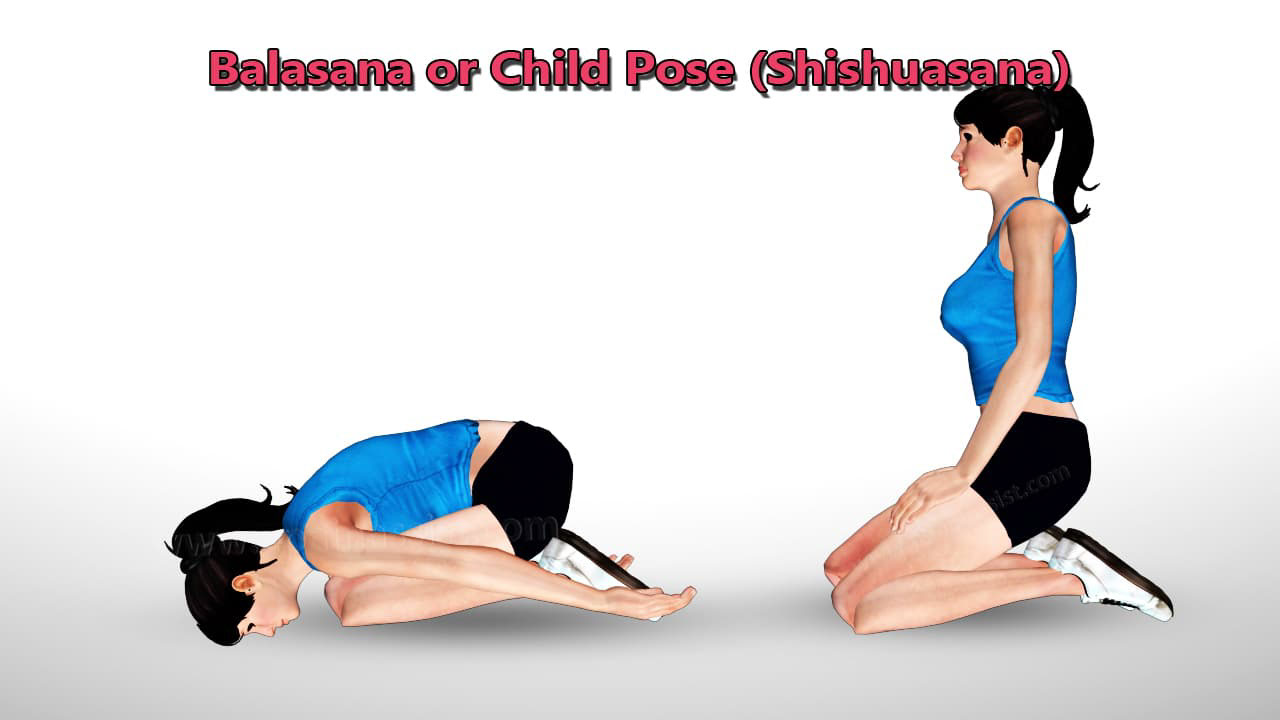The neck is a vital and delicate part of the body. It supports the human head and permits motion. The neck is made up of muscles, bones and ligaments. Most people suffer from neck pain occasionally and this can be caused by either inflammation, injuries, contact sports, whiplash, muscle strain and tension, heart attack, meningitis, osteoporosis, rheumatoid arthritis, fibromyalgia, age, cancer of the spine, infections, congenital abnormalities, tumors, spinal stenosis or a ruptured disc.
It is advisable for you to see your physician if you are experiencing recurring or persistent neck pain. Symptoms of neck pain includes nausea, fever, lump in your neck, spontaneous severe neck pain, tingling, numbness, Inability to touch your chin or move your arms, difficulty in breathing and swallowing, swollen glands and pain that affects your arms downwards.

How Long Does Neck Pain Last?
The recovery period or healing time for neck pain depends on the severity of the injury or the damage to the bones and muscles and the type of treatment prescribed. Neck pain intensity ranges from simple neck spasms to more complicated conditions such as structural changes and severe damages of tissues and muscles.
Neck spasms are caused by involuntary contractions of the muscles and can last for few days or weeks while severe structural, muscle and tissue damages may take long to heal. Quick recovery of your neck pain will also depend on how you heed to the advice of your doctor. You will also have to stop doing the activities that caused the neck problem. Stopping such activities will promote quick healing and prevent more complications and pains.
What to do for Neck Pain?
Stiff neck and neck pain are common conditions that can affect anybody. The good news is that there are treatment options for such conditions. The two major treatment options for neck pain are non-surgical and surgical treatments. However, it is rare for a neck problem to end up in surgery.
Non-surgical option is the widely used option in neck pain treatments. It includes medication, cervical traction, cervical collar, physical therapy and chiropractic care. Exercise and massage falls under this category too.
Surgery to correct neck related problems is rare and can only be prescribed in conditions which involves vertebral fracture, herniated disc, spinal stenosis and prolonged neck pain and weakness. Surgical options are independent depending with the needs of a patient. The surgeon will advice on the best option depending with your age, physical condition, occupation and other related factors.
Conservative Treatment for Neck Pain
Conservative treatment of neck pain and stiffness is basically treating the problem without performing any surgery. It includes the following means:
Medication
This method of treatment for neck pain involves the use of medicines such as muscle relaxants, non-steroidal anti-inflammatory drugs and use of short term opioids to alleviate neck pain.
Cervical Traction
This type of treatment is mostly prescribed for home use. Cervical traction increases the size of the neural foramen by gently stretching the muscle while pulling your head.
Cervical Collar
Cervical collar treatment for neck pain inhibits motion and supports your head as well as reducing pressure and weight from the neck. This will allow your neck muscle to rest and heal from strain.
Physical Therapy
PT is very effective in treatment of neck pain. This can be performed in form of ultrasound, massage and application of heat and cold to alleviate the neck pain. The therapist will also educate you on different corrective posture and muscle relaxing techniques.
Medications for Treating Neck Pain
Use of medicine is one of the highly recommended ways in reduction of neck pain and inflammation of neck tissues and muscle pains. Pain relief medicines will alleviate the neck pain and allow you room to start the healing processes and exercises. We have the non-prescription pain relievers which you can purchase over the counter and prescription pain relievers.
Non-prescription pain relievers includes acetaminophen, creams and gels such as Bengay and non steroidal drugs like naproxen, ibuprofen which will treat and reduce the neck pain.
Prescription pain relievers for neck pain includes the following:
- Narcotic Pain Relievers – These drugs are used in treatment of short term severe acute neck pain.
- Muscle Relaxants – These are medicines used in severe spasms and neck pain.
- Corticosteroid Injections – This type of medicine is rarely prescribed for neck pain but can be recommended in case of numbness of the arm and pain caused by radiculopathy.
Injections for Neck Pain
Injection can also be prescribed in relieving neck pain. It is administered where medicines and physical therapy (PT) has been useless. The following are types of injections that can be prescribed for you:
Epidural Steroid Injection for Neck Pain
This type of injection reduces the inflammation of the nerve roots and place steroid into the epidural space to promote faster recovery and reduce pain.
Facet Joint Injection
This injection is shot into the facet joint which is positioned at the back of your vertebral bone to reduce inflammation of neck. The doctor will use X-rays to locate the exact point to inject.
Nerve Root Block
This type of injection for treating neck pain will enhance healing around the nerve root of the spine where inflammation has attacked due to a bone spur or a damaged disc. This injection is also administered to diagnose unclear nerve root that causes pain.
Massage Therapy for Neck Pain
The main aim of massage therapy for neck pain is to keep your neck free of pain and helps in quicker recovery. To alleviate your neck pain, the therapist will focus on massaging your upper back and shoulder. In some cases the neck massage can increase the symptoms of neck pain but a gentle massage of the chest, arms, back and legs can reduce your neck pain in a major way. Regular massage will clear the neck pain, possibility of pulling a muscle, improve flexibility and posture and to reduce stress.
Exercises for Treating Neck Pain
Neck pain and neck stiffness are mostly caused by misalignment of the spine, shoulders, hips and a head that is stuck in a forward position due to lack of motion. Exercises can help in a great way if properly done. It is advisable to perform exercises that have been recommended by your doctor to avoid escalation of the pain and the problem.
The following exercises can be recommended:
Frog Exercise for Neck Pain
In this type of exercise for neck pain you will lie down on the floor with your knees apart and your feet together. Put your palm on the floor at a 45 degrees position to your body. Make sure that you allow your back to arch naturally on the floor. Maintain that position for 2 minutes.
Static Wall Exercise for Neck Pain
In this type of exercise you will lie on the floor and then scoot to the wall with your legs lifted upwards and straight. Make sure that your tailbones rests flat on the floor. Scooting backwards a little bit will allow your tailbones to rest flat on the floor. Tighten your thighs and pull your toes backwards. Your feet must be high width apart and straight pointed from the wall. Stay in that position for 3minutes.
Static Back Exercise for Neck Pain
In this exercise you will lie on the floor with your legs on a chair while your hips and knees are at a ninety degrees position and your arms placed at a forty five degrees position on the floor, with your palms up. Maintain this position for 2 minutes.
Another Exercise for Neck Pain is Sitting Floor
In this exercise you will sit down on the floor with your feet hip width apart and your back straightened up against the wall. Pull your shoulder downwards and forward. Pull your toes back and tighten your thighs. Make sure that your head is touching the wall and your feet are straight. Maintain that posture for 3 minutes.
Yoga for Neck Pain Treatment
Research has shown yoga as one of effective ways in alleviation of neck pain and stiffness. Yoga poses play a major role in promoting healing in neck related problems such as spasms and neck muscle pain. Yoga is all about doing easy stretches and poses that can reduce neck pain. Regular yoga poses will help you in faster recovery from neck pain. There are many yoga poses that you can perform to alleviate your neck pain.
Thread the Needle Yoga Pose
You can start this pose on a flat raised table like position. Let your knees align with your hips. Then stretch your left hand forward as far as you can make it and thread your right arm below it.
Let your right arm and your right cheek rest on the floor or carpet. Close your eyes and remain in that position as you slowly stretch your arms, upper back, shoulders and neck. Maintain that posture for between 8 and 10 breaths. The switch to the other side and repeat the same procedure.
Bitilasana and Marjariasana for Neck Pain
Bitilasana or the Cow Pose and Marjariasana or the Cat Pose are an excellent Yoga posture to relieve neck pain and strengthen the muscles of your neck and spine. Kneel down resting yourself on your hands and knees. Your complete body from the tip to the toe must be aligned in a straight line. Now you need to slowly move your head vertically upwards while you inhale and back downwards as you exhale. Repeat the same for 7-10 times.
Balasana for Neck Pain Relief
Balasana or Child’s Pose is very effective Yoga posture for not just for neck pain but also reducing anxiety, mental tension and stress. Balasana is also an effective yoga pose to stretch the upper back and neck muscles. Rest your body on your knees and hands as in the previous posture. Now, sway your hips backwards to rest them on your legs and heels as you exhale. More your body forward extending the tips of your hands in front while you inhale. The complete cycle should take about 1 minute, spending equal time for inhaling and exhaling.

Ear to Shoulder Yoga Pose
Ear to Shoulder Yoga Pose is probably the easiest of all the Yoga postures that helps in easing the neck pain. You can perform this Yoga posture while standing as well as sitting but your head and spinal cord must be properly aligned. Take a deep breath and now move your head sideways until your ear touches the shoulder, exhaling all the air. As you move your head backwards towards the neutral position, take deep breadth again. Repeat the same while moving your head on the opposite side to touch the shoulder. Be very careful to move your head gradually without jerking your neck. You need to repeat the complete cycle for 8 to 10 times.
Also Read:
- Neck Pain or Cervicalgia: Types, Causes, Pathophysiology, Symptoms, Treatment, Exercises, Tests
- Simple Remedies For Relieving Neck Pain
- Massage for Neck Pain Relief
- Physiotherapy Management for Neck Pain
- Can Neck Pain Cause Shoulder Pain?
- Muscle Relaxers for Back and Neck Pain
- Important Vitamins to Take for Shoulder and Neck Pain
- Neck Pain in Teenagers: Causes, Symptoms, Treatment, Prevention
